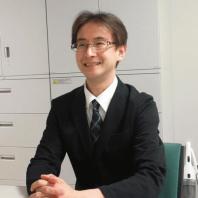![]()
![]()
Research Support Office Research Advancement Division. Tokyo University of Agriculture and Technology
| TEL | +81-42-367-5944 |
|---|---|
| FAX | +81-42-367-5946 |
This program is supported by MEXT’s scientific technology human resource development fee grant, "Program to Disseminate Tenure Tracking System".
Home > Tenured Faculties > Mori Keiji

Mori Keiji

| Affiliation | Institute of Engineering |
|---|---|
| Division | Division of Applied Chemistry |
| Research field | Synthetic Organic Chemistry |
| Keyword(S) | redox process, hydride shift, C–H bond functionalization |
| Url | http://web.tuat.ac.jp/~kmori/en/index.html |
| Research experience | ・2005: Research Fellowship for Young Scientists (DC1) |
|---|---|
| Educational background | ・2003: BS from the Tokyo Institute of Technology |
| Awards | * The latest information is shown at the member's website. (At Apr. 2015) |
| Selected papers and publications | * The latest information is shown at the member's website. (At Apr. 2015) |
The multi-step sequence was required for the synthesis of fine chemicals (such as drugs, agrochemicals). Substantial amount of organic (inorganic) wastes were produced in the process. Thus, the development of novel and environmentally benign process was strongly demanded. The C–H bond functionalization reaction is the highly promising approach to satisfy this demands. The transformation of inert C(sp3)–H bond was difficult task, even though the extensive studies for the C–H bond functionalization reaction have been conducted. Furthermore, the employment of the toxic and expensive transition metal and excess amount of external oxidants was required to accomplish this transformation in most cases.
Recently, we have developed novel C(sp3)–H bond functionalization strategy, hydride shift/cyclization system (internal redox system). There are three key features in the reaction: (1) direct transformation of inert C(sp3)–H bond, (2) catalytic reaction with simple (conventional) acid (Brønsted or Lewis acids), and (3) construction of fused-polycyclic skeleton by single operation. Our future plan is the synthesis of complicated polycyclic framework and some biologically active compounds based on this method.
The enough space, which was almost same to professors, and start-up money for the research are allowed to receive in this university. The many opportunities for contacting with other many tenure-track researchers made this program more attractive and encouraging for the young principal investigators.
The achievement of unprecedented, inert C(sp3)–H bond functionalization triggered by hydride shift/cyclization system, implies the possibility for the novel reactions involving transfer of another group. It would be an interesting tool for the synthesis of new type of molecules (drugs, agrochemicals, materials, and so on), which could not be synthesized by the conventional method. The task for the researchers in the university is not limited to pursuit of new scientific findings but education of the students. To keep this important task in mind, I would do my best for the education to producing qualified people.